Kitchen Layouts 101 - The Complete Guide
In the heart of every home, the kitchen stands as a hub of creativity, nourishment, and connection. A well-designed kitchen layout is more than just a configuration of cabinets and appliances; it's a blueprint for a seamless culinary experience.
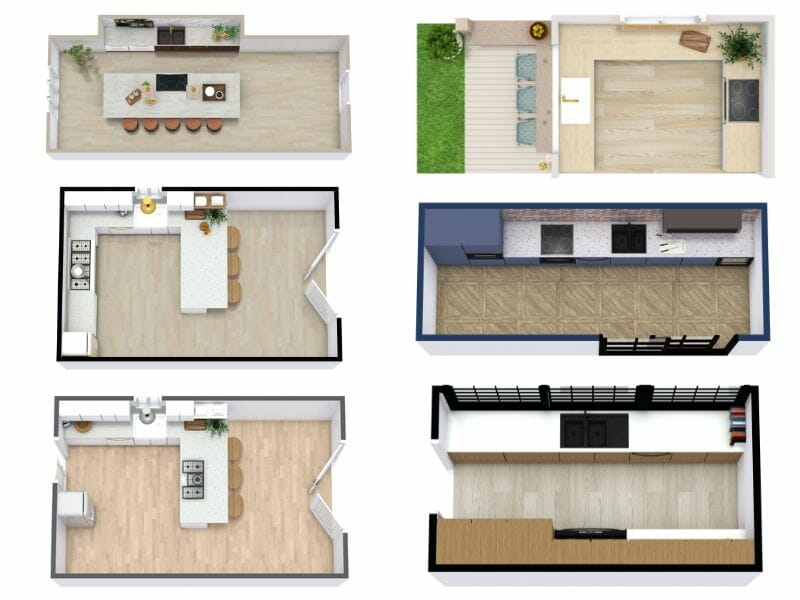
The importance of an intelligently planned kitchen layout cannot be overstated, as it holds the key to unlocking enhanced functionality, heightened efficiency, and captivating aesthetics within the culinary space. In this comprehensive guide, we delve into the art and science of kitchen layouts, exploring how different designs can transform how we cook, interact, and enjoy our living spaces.
From optimizing workflows to maximizing storage, join us on a journey to discover how a thoughtfully orchestrated kitchen layout can truly elevate the heart of your home.
Understanding the Basic Kitchen Layouts
At the core of every well-designed kitchen lies a solid understanding of its layout's fundamental principles. These principles serve as the building blocks that guide the arrangement of various elements within the space, influencing its visual appeal and overall functionality.
Among the key considerations in kitchen layout design are the primary layout types: Galley, L-shaped, U-shaped, Island, Peninsula, and Single-wall. Each layout presents its own set of advantages and considerations, impacting not only the flow of traffic within the kitchen but also the efficiency of workspace utilization and the potential for social interaction.
The Galley layout, characterized by parallel countertops and workspaces, offers a streamlined and efficient workflow, ideal for smaller spaces. Its linear design maximizes functionality within a confined area, ensuring that everything from preparation to cooking and cleaning can be easily performed.

The L-shaped layout extends the workspace by utilizing two adjacent walls, creating a corner for potentially integrating a dining or casual seating area. This configuration promotes smooth traffic flow and encourages a natural division between the cooking and social zones.
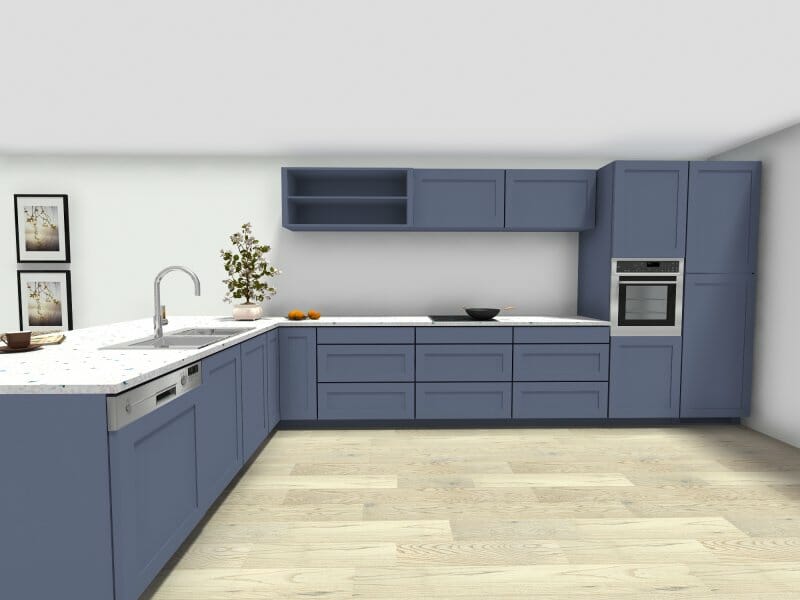
For those seeking ample space and a versatile design, the U-shaped layout wraps cabinetry and appliances around three walls, forming a horseshoe-like arrangement. This layout maximizes storage and work surfaces while allowing for an island's integration for added functionality and socializing.

An Island layout introduces a freestanding unit in the center of the kitchen, offering additional workspace, storage, and a focal point for gatherings. The island's placement can impact traffic flow and social interaction, making it a pivotal consideration in layout planning.
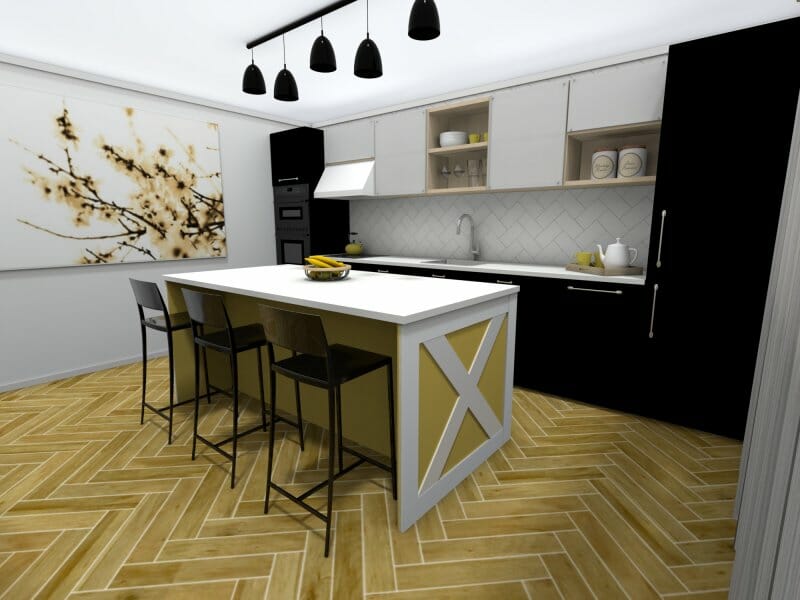
A peninsula layout is an extension of the L-shaped or U-shaped designs, where one end of the countertop extends into an adjoining space, creating a semi-enclosed area. This layout type offers an opportunity for casual dining or extra workspace while maintaining an open feel.
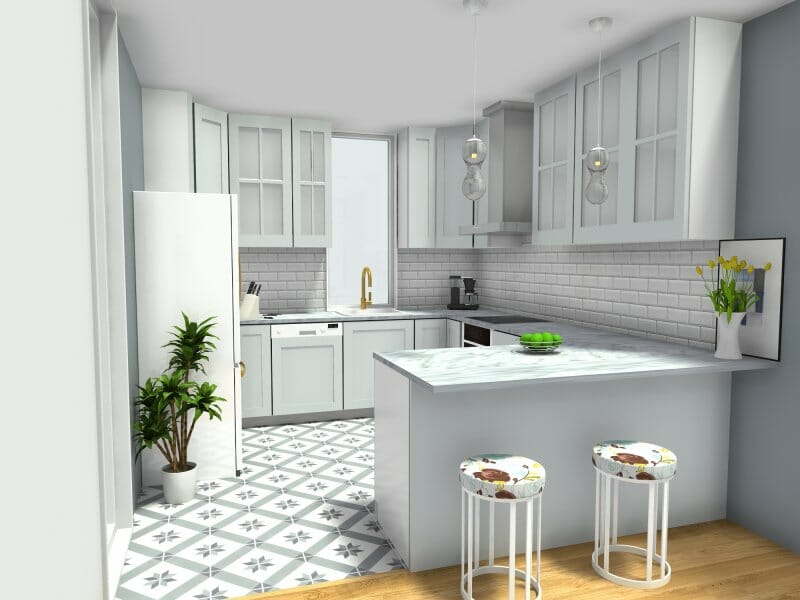
In contrast, the single-wall layout condenses all elements along a single stretch of wall. This layout is often found in smaller homes or apartments and necessitates a careful balance between efficient use of space and maintaining a functional flow.
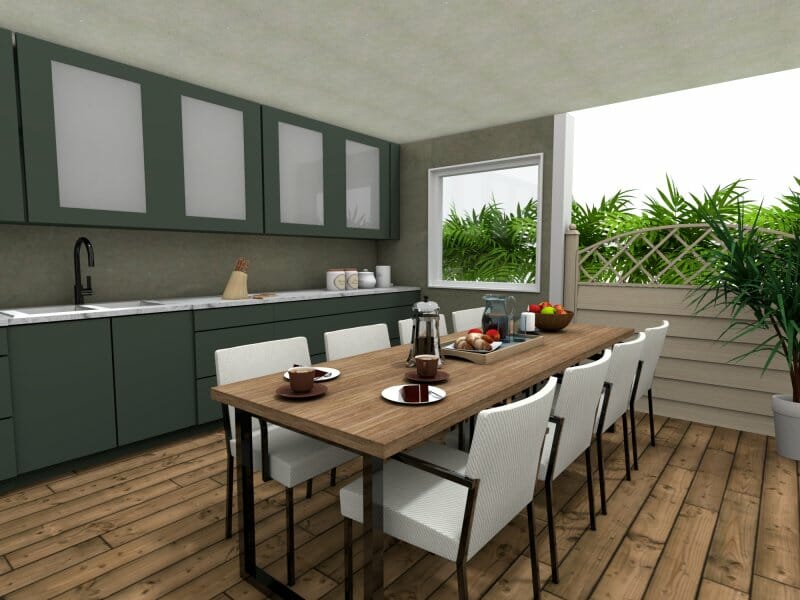
In the realm of kitchen layouts, each type shapes not only the practicality of cooking processes but also the interactions that unfold within the space. Whether prioritizing efficiency, aesthetics, functionality, or a harmonious all three, understanding these layout basics lays the foundation for designing a kitchen that aligns perfectly with your needs and desires.
Assessing Your Space
Embarking on the journey to design your ideal kitchen layout begins with a thorough evaluation of your existing space.
This critical step sets the stage for a layout that seamlessly integrates functionality and aesthetics. To start, guide your focus on gauging the dimensions and proportions of your kitchen. Assess available square footage, taking into account both floor space and ceiling height.
Additionally, consider structural constraints such as load-bearing walls and architectural features that may impact layout possibilities.

The intricate dance of plumbing and electrical configurations also plays a pivotal role in shaping your kitchen's layout. Evaluate the current placement of outlets, water lines, and gas connections, as these elements can limit or open up possibilities for appliance and workspace arrangements.
This assessment phase is an opportune time to pinpoint potential challenges and uncover hidden opportunities for improvement.
Are there awkward corners that could be transformed into functional storage spaces?
Is there an underutilized nook that could accommodate a cozy breakfast bar?
By identifying these aspects, you can proactively address challenges and leverage untapped potential to create a layout that maximizes utility and allure.
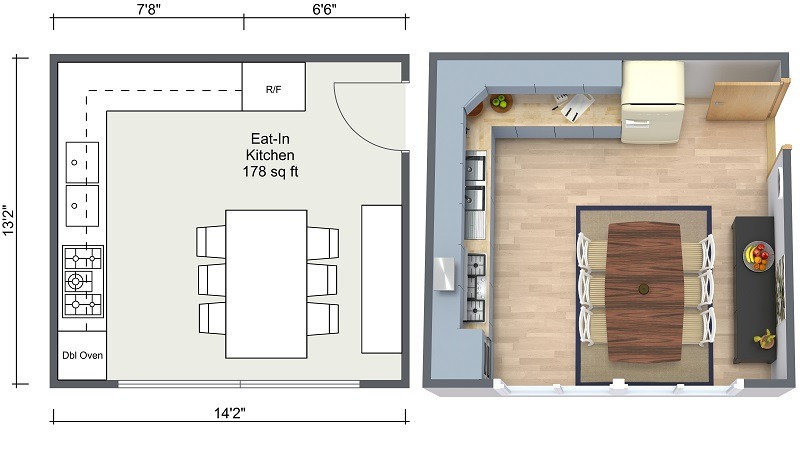
Key Considerations for Choosing the Right Kitchen Layout
Selecting the perfect kitchen layout is a delicate balance of art and science, merging practicality with aesthetics to create a harmonious culinary space.
At the heart of this decision lies the concept of kitchen "zones." These distinct areas—preparation, cooking, storage, and cleaning—guide the arrangement of appliances and workspaces, ensuring seamless and efficient flow between tasks. The placement of these zones within your chosen layout can profoundly impact the ease and enjoyment of your cooking experience.
Factors such as family size, lifestyle, and cooking habits are equally vital in layout selection. A bustling household with a passion for entertaining may gravitate towards an open-concept layout that encourages interaction between chefs and guests.
On the other hand, a smaller family seeking efficiency might lean toward a galley or U-shaped layout, where every step serves a clear purpose.
The key lies in finding the sweet spot where form and function converge.
By considering the interplay of these elements—zones, family dynamics, and the balance between beauty and usability—you're primed to select a layout that suits your practical needs, delights the senses, and embodies the heart of your culinary vision.
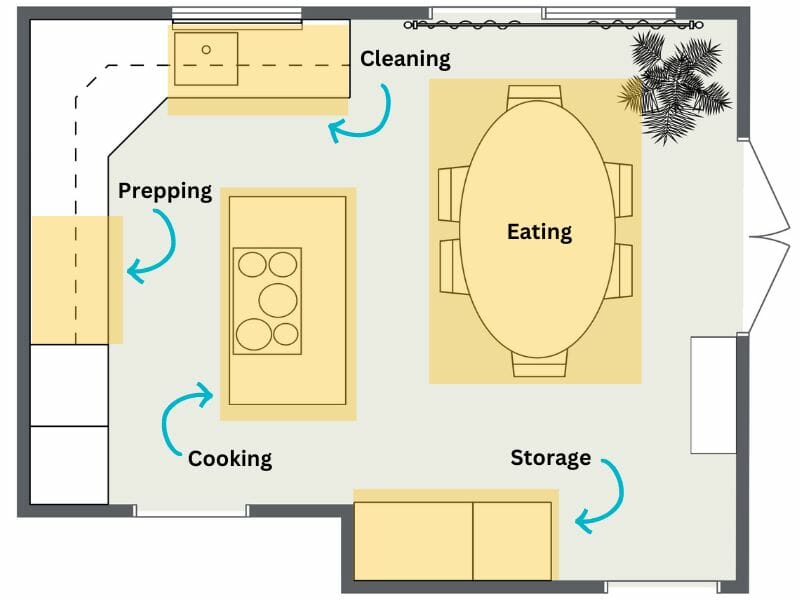
Ergonomics and Workflow Optimization
Ergonomic design forms the cornerstone of a well-functioning kitchen layout, catering to the comfort and efficiency of those who utilize the space.
Rooted in the principle of optimizing human movement and interaction, ergonomic design considers the natural flow of tasks, minimizing physical strain and maximizing productivity. Creating an efficient workflow that reduces unnecessary movement is essential to achieve this. Place frequently used items—such as cutting boards, knives, and utensils—within arm's reach of each other to minimize the need for excessive steps during food preparation.
Central to ergonomic kitchen design is the concept of the "kitchen work triangle." This triangle, formed by the arrangement of the sink, stove, and refrigerator, forms the core workstations of any kitchen. Movement efficiency between these three points is crucial, as it directly impacts the ease of meal preparation. A well-planned work triangle allows cooks to smoothly transition between washing, chopping, and cooking without unnecessary back-and-forth travel.
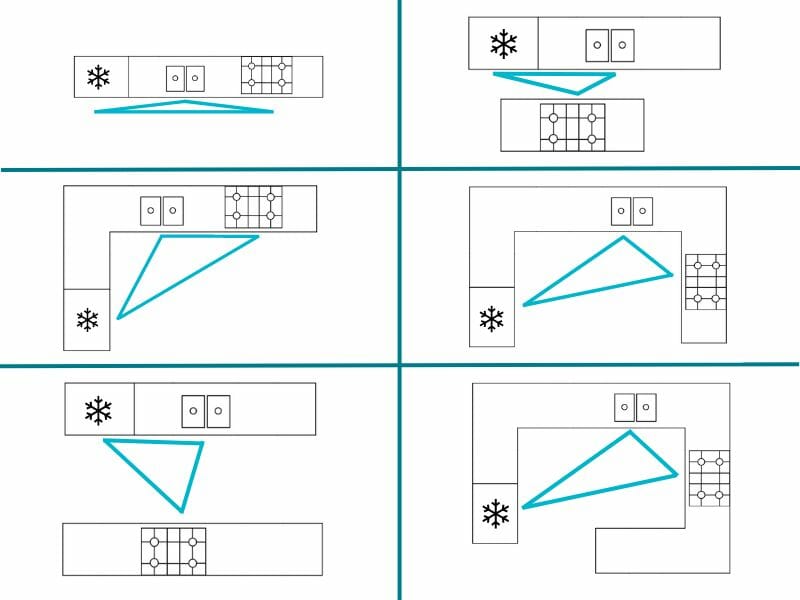
Tailoring Kitchen Layouts to Your Needs
Adopting a kitchen layout is just the beginning—true customization lies in tailoring that layout to your unique needs and preferences. This phase involves translating the blueprint so that it encapsulates your lifestyle.
One of the keys to successful customization is the integration of specialized appliances, storage solutions, and distinctive design elements.
For the avid baker, incorporating a double oven might be a game-changer. At the same time, a wine enthusiast could prioritize a built-in wine fridge within arm's reach of the dining area.
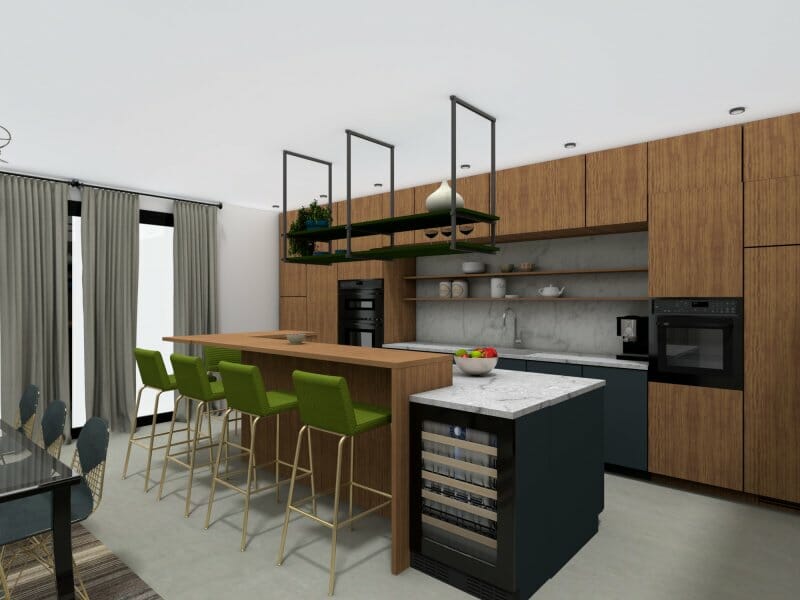
In terms of storage, consider the items you use most frequently and design storage solutions that keep them easily accessible. Pull-out pantry shelves, deep drawers for pots and pans, and clever corner solutions can significantly impact daily functionality. Moreover, think beyond the traditional and embrace innovative design elements—whether it's a uniquely shaped island, a chalkboard wall for recipes and shopping lists, or even a cozy breakfast nook nestled within the kitchen.
Different layouts can also be adeptly tailored to accommodate various lifestyles.
A busy family might find the open concept of an Island layout fosters easy supervision of homework while preparing dinner. On the other hand, an empty-nester couple might opt for an L-shaped layout with a cozy seating area to enjoy leisurely breakfasts.
The customization journey is about merging your individual needs with the versatility of your chosen layout, creating a space that caters to practicalities and resonates with your personal tastes and aspirations.
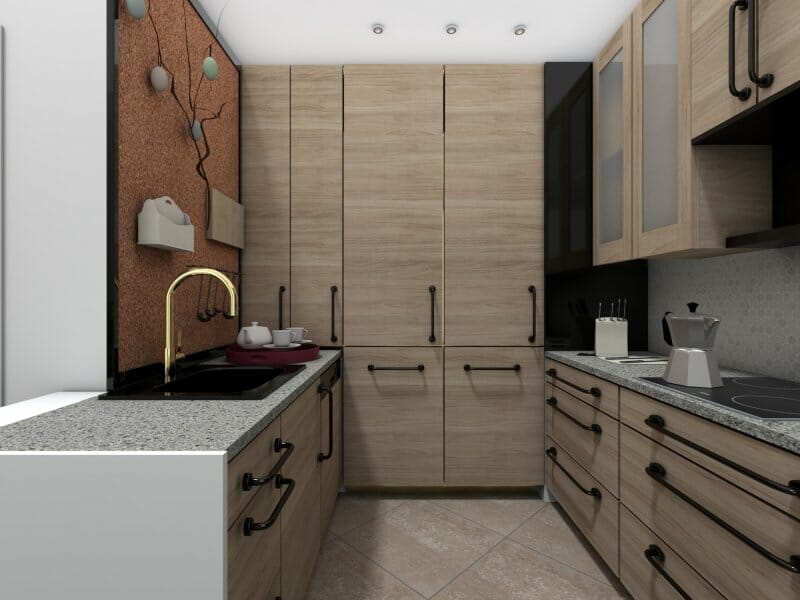
Addressing Common Challenges
Navigating the world of kitchen layouts often comes with its fair share of challenges, each presenting an opportunity for creative problem-solving.
Maximizing storage becomes paramount in smaller kitchens, where space is at a premium. To overcome this challenge, focus on vertical storage solutions such as tall cabinets, open shelves, and hanging pot racks. Utilize the insides of cabinet doors for additional storage, and consider pull-out drawers that use every inch of available space.
For layouts in open-concept living spaces, the challenge lies in seamlessly integrating the kitchen with the surrounding areas while maintaining a distinct identity.
One strategy is to use design cues—like consistent color palettes or materials—that tie the kitchen visually to the adjacent spaces. Incorporating a kitchen island with bar seating can act as a natural boundary between the kitchen and the living area while fostering a sense of togetherness.
Creative solutions such as foldable tables or breakfast bars can serve as versatile dining spots in layouts with limited square footage without encroaching on valuable cooking space. When addressing common challenges, it's important to approach them as opportunities for innovation, allowing the limitations to guide you toward clever solutions that enhance your kitchen's functionality and aesthetics.
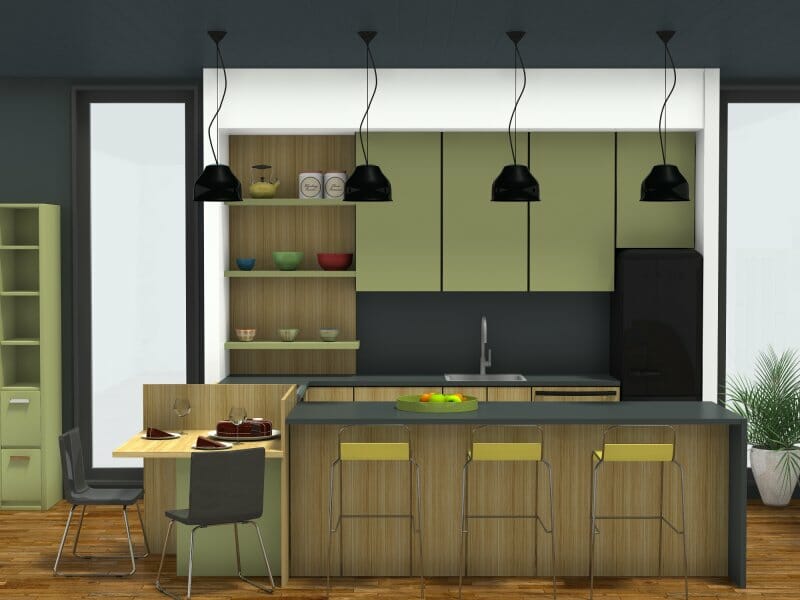
Navigating Design Trends
In the dynamic realm of kitchen design, staying abreast of current trends can infuse your layout with a contemporary flair while reflecting your personal style.
Today's kitchen layouts often embrace a seamless blend of form and function, where aesthetic choices coexist harmoniously with technological advancements. Embracing technology, sustainable design, and smart appliances is a notable trend in modern layouts. From energy-efficient lighting to intelligent appliances that respond to voice commands, these innovations cater to convenience and environmental consciousness.
Sustainable design extends further to materials and finishes, embracing eco-friendly options like bamboo or reclaimed wood. Moreover, the integration of ample natural light and energy-efficient windows aligns with the eco-conscious direction of modern layouts.
While trends may shape the present, timeless design choices are essential for a kitchen that stands the test of time. Neutral color palettes, classic cabinetry styles, and high-quality materials form the foundation of enduring designs. When navigating trends, it's important to incorporate elements that resonate with your personal taste while also being mindful of your layout's long-term appeal.
By striking a balance between contemporary trends and timeless elegance, your kitchen layout becomes a space that reflects the present. It anticipates the future, ensuring its enduring charm for years to come.
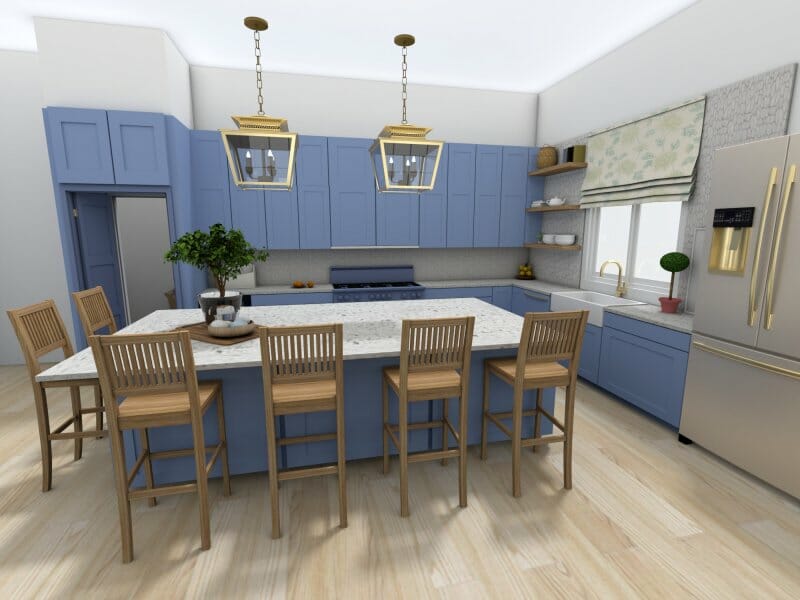
Seeking Professional Help
While embarking on the journey of crafting your dream kitchen layout can be an exciting endeavor, there are instances where seeking professional assistance proves invaluable.
It's advisable to consult a professional kitchen designer or architect when the project involves complex structural changes, significant renovations, or when you're seeking a layout that requires expert guidance to optimize functionality and aesthetics. These experts bring a wealth of experience and knowledge to the table, ensuring that your vision is translated into a meticulously planned and executed reality.
The benefits of working with professionals extend beyond their expertise. They possess a keen eye for spatial arrangement, ergonomics, and design principles, enabling them to identify innovative solutions to challenges you might not have anticipated. Moreover, their collaboration with contractors and knowledge of building codes streamline the process, potentially saving you time and avoiding costly mistakes.

Budgeting and Implementation
Budget considerations play a crucial role in guiding your choices throughout the redesign or renovation process.
Evaluating your budget and defining your financial limits upfront helps make informed decisions aligning with your resources. It's important to allocate funds not only for materials and appliances but also for potential unforeseen expenses.
To maximize your budget, consider cost-saving tips and alternatives without compromising quality.
Refacing cabinets instead of replacing them, opting for mid-range materials, and repurposing existing appliances can significantly cut costs. Additionally, prioritizing essential layout changes over cosmetic updates allows you to allocate your budget where it matters most.
Design Your Layout With A Kitchen Layout Planner
Whether you're seeking to maximize efficiency in a compact kitchen, foster a welcoming atmosphere for social gatherings, or strike a balance between contemporary trends and timeless design, your path to a harmonious kitchen layout is clear.
RoomSketcher’s state-of-the-art App makes it easy to create kitchen layouts and visualize your design in 3D. Try our basic functionalities for free and upgrade your subscription for full access to all our features.
Don't forget to share this post!
Recommended Reads
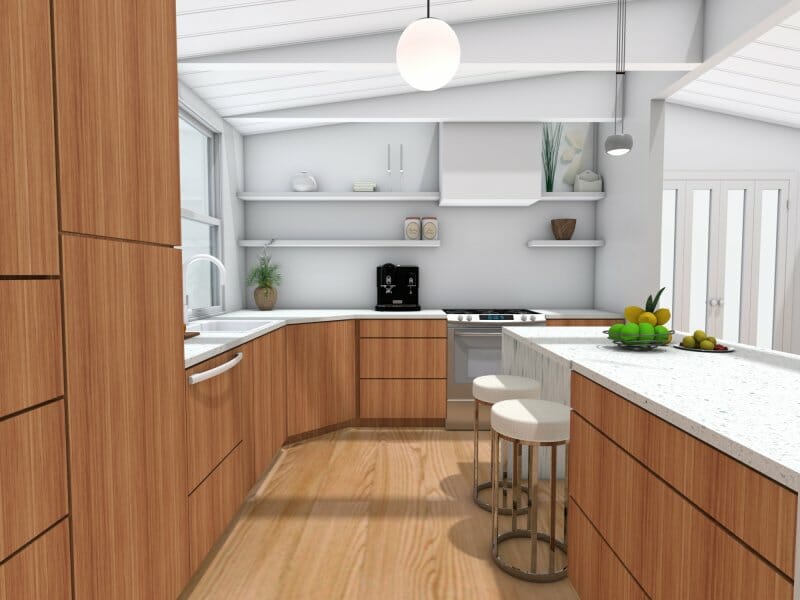
How to Make the Most of Your Galley Kitchen Layout
Discover how to make the most of your galley kitchen layout with these tips for optimizing space, storage, appliances, lighting, and style. Create your dream kitchen today with RoomSketcher!
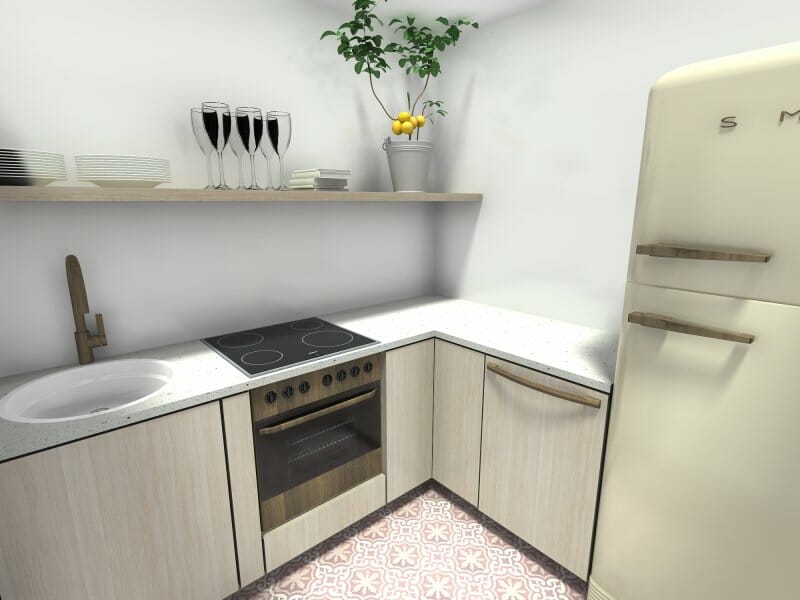
Make a Small Kitchen Layout Feel Bigger With Clever Design Tricks
Create kitchen floor plans in minutes with the easy-to-use RoomSketcher app and discover how to make a small kitchen layout feel bigger
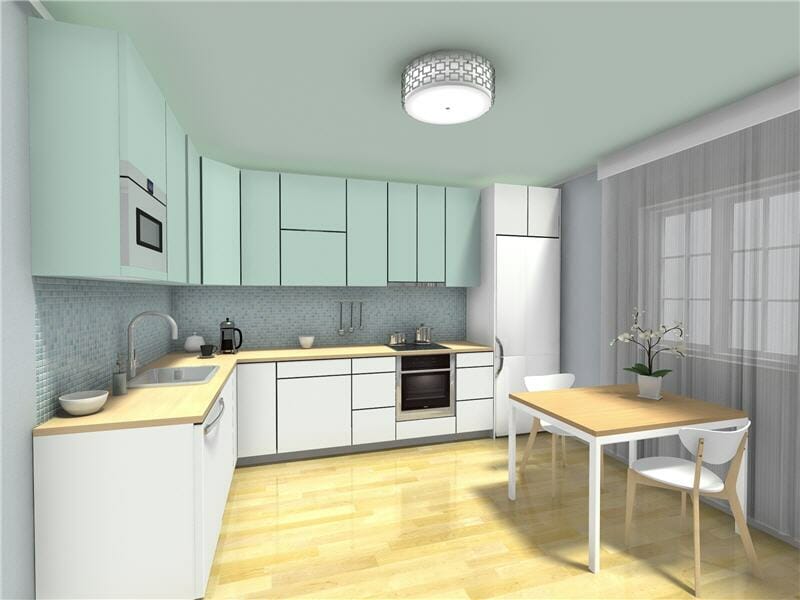
6 Tips to Think About When Designing an L-Shaped Kitchen Layout
We have put together 6 tips to help you create the perfect L-shaped kitchen layout.
